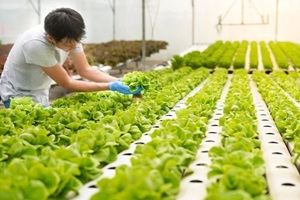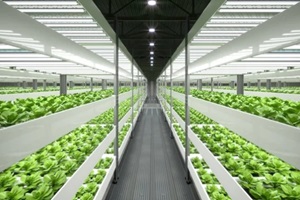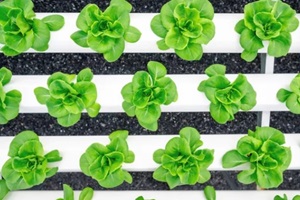 Hydroponics, the act of growing plants in soilless mediums, has streamlined modern agriculture by offering a sustainable way to produce crops efficiently. However, a new wave of innovation is emerging, blending the principles of hydroponics with the benefits of custom soil mixes.
Hydroponics, the act of growing plants in soilless mediums, has streamlined modern agriculture by offering a sustainable way to produce crops efficiently. However, a new wave of innovation is emerging, blending the principles of hydroponics with the benefits of custom soil mixes.
These methods are more than just alternatives to traditional gardening; they represent a significant leap toward sustainable food production and ecological balance. Discover how these cutting-edge approaches are revolutionizing how we grow plants and how they’re actively shaping the future of agriculture.
Composition and Benefits of Soilless Potting Mixes in Hydroponics
Soilless potting mixes offer several advantages over traditional soil and are typically composed of organic and inorganic materials such as coconut coir, perlite, vermiculite, and controlled-release fertilizers.
Coconut coir, a sustainable alternative to peat moss, forms a significant portion of these mixes due to its excellent water retention and aeration properties.
Perlite, a lightweight volcanic glass, and vermiculite, known for its moisture retention, contribute to the structural integrity and hydration of the mix. Controlled-release fertilizers ensure a consistent nutrient supply essential for plant growth.
One of the primary benefits of using soilless mixes in hydroponics is their ability to provide better control over nutrient availability and pH levels. These mixes are devoid of soil-borne pests, diseases, and weed seeds, which in turn actively reduces your dependency on pesticides and herbicides.
Additionally, the excellent water retention properties combined with adequate drainage capabilities make soilless mixes highly efficient in water usage, an important consideration in sustainable farming practices.
To help better guide you, let’s take a closer look at a popular custom soil mix (that doesn’t actually use soil) that you can readily use in your hydroponic setup.
Custom Mix Recipe
For a balanced soilless mix to use in your own setup:
- To begin, blend 1 part coco coir or peat moss, 1 part perlite or vermiculite, and 2 parts compost together.
- Use tools such as cement mixers for more homogeneous mixing.
- Add a small amount of water to help facilitate even mixing and initial plant wetting.
Optional Additives
While optional additives such as worm castings, mycorrhizae, and slow-release fertilizers can be included, they might be unnecessary for hydroponic growers who are focused on seedlings. The goal is a supportive mix without excess materials that could interfere with hydroponic processes.
Challenges and Solutions in Hydroponic Soilless Farming
Despite their numerous benefits, soilless hydroponic farming also presents some potential challenges.
 Considering the need for specialized equipment and technology, the initial setup costs can be a big hurdle to overcome. To address this challenge, starting small and exploring funding options can be effective strategies.
Considering the need for specialized equipment and technology, the initial setup costs can be a big hurdle to overcome. To address this challenge, starting small and exploring funding options can be effective strategies.
The requirement for technical expertise in managing nutrient solutions and environmental factors is another significant challenge. Continuous education, training, and consultation from experienced growers can help overcome this hurdle.
Energy consumption actively contributes to the operational costs of hydroponics, but utilizing energy-efficient equipment and renewable energy sources including solar panels can mitigate this issue.
System failures, such as equipment malfunctions or power outages, can immediately impact plant health. Thankfully, implementing redundancy planning and regular maintenance can minimize these risks.
Continuous monitoring and management of the system can help you maintain the best growing conditions. You can further streamline these processes using automation and data-driven decision-making to help reduce the need for manual input, supervision, and labor.
Techniques and Systems in Hydroponic Cultivation
There are a variety of hydroponic systems and techniques that offer flexibility in optimizing growing operations. Deep Water Culture or DWC systems, which are ideal for leafy greens and herbs, involve floating plants on recirculating water.
On the other hand, the Nutrient Film Technique, or NFT for short, uses channels or troughs for a shallow stream of water, suitable for short-statured plants.
Ebb and Flow systems, adaptable for a wide range of crops, intermittently flood the grow tray with nutrient solution. Drip systems deliver the solution to the base of each plant, functioning well with media that have high water retention capabilities.
Aeroponics, a technique that mists the roots with a hydroponic solution, is known for precise nutrient delivery and efficient water usage. Wicking systems, which is the simplest and most passive technique, use capillary action to deliver the solution directly to the roots.
Each of these systems has specific requirements and considerations, including careful consideration of the custom soil mix you choose. For instance, DWC systems are relatively stable but require careful monitoring of water chemistry. NFT systems are easily stackable and cleanable but hold less water per plant.
Ebb and Flow systems are versatile but need to ensure complete drainage to prevent root issues. Drip systems are low maintenance but prone to clogging, while aeroponics offers the benefits of fast growth but can be complex to design and maintain.
A wicking system, which is the simplest and most passive technique, uses capillary action to deliver the solution directly to the roots.
Applications For Soilless Mixes
Soilless mixes have widespread applications in various agricultural settings, including commercial hydroponic operations and urban farming.
They allow precise control over nutrient delivery and water content in commercial setups, leading to improved crop yield and quality. Urban farming benefits from the greater space efficiency offered and the ability to cultivate crops year-round without worrying or caring about different weather conditions.
Have the Best Hydroponic Setup
 Soilless potting mixes in hydroponics mark a significant advancement in sustainable agriculture, combining an interesting blend of efficiency and adaptability.
Soilless potting mixes in hydroponics mark a significant advancement in sustainable agriculture, combining an interesting blend of efficiency and adaptability.
They actively enhance nutrient control, reduce disease risks, and are versatile across various hydroponic methods. This innovation is actively guiding us toward a future where farming is both more productive and environmentally conscious.
The path to mastering hydroponics with soilless mixes is challenging, requiring an initial investment and a deep understanding of technical nuances. However, the benefits, including higher yields and sustainable farming practices, make this commitment worthwhile.
Reach Out to Northern Virginia’s Custom Soil Hydroponic Professionals
Ready to start your hydroponic journey? Dirt Connections is here to assist and are more than happy to help. They offer a selection of biomix soils for your custom soil mix that can work with hydroponic setups, providing the necessary expertise and products you need.
Contact them in Virginia at 1 (703) 940-9949 or in Maryland at 1 (301) 691-3215, or you can visit their website for more information on their biomix soils and their benefits for your hydroponic system.
With Dirt Connections, you step into an innovative approach to farming, moving towards a more sustainable and productive agricultural future.
Summary

Dirt Connections was started with one goal in mind: providing quality residential and commercial construction services to clients on time and on budget. Reach out for more information on how we can support your next project.
For your convenience our estimates are free and by appointment. Call 703-940-9949 for a free estimate today!









































